-
 Enhancing Agricultural Soil Carbon Sequestration: A Review with Some Research Needs
Enhancing Agricultural Soil Carbon Sequestration: A Review with Some Research Needs -
 Combining Multi-Source Satellite Data with a Microclimate Model to Analyze the Microclimate of an Urban Park
Combining Multi-Source Satellite Data with a Microclimate Model to Analyze the Microclimate of an Urban Park -
 Application of Machine Learning and Hydrological Models for Drought Evaluation in Ungauged Basins Using Satellite-Derived Precipitation Data
Application of Machine Learning and Hydrological Models for Drought Evaluation in Ungauged Basins Using Satellite-Derived Precipitation Data
Journal Description
Climate
Climate
is a scientific, peer-reviewed, open access journal of climate science published online monthly by MDPI. The American Society of Adaptation Professionals (ASAP) is affiliated with Climate and its members receive discounts on the article processing charges.
- Open Access— free for readers, with article processing charges (APC) paid by authors or their institutions.
- High Visibility: indexed within Scopus, ESCI (Web of Science), GeoRef, AGRIS, and other databases.
- Journal Rank: JCR - Q2 (Meteorology and Atmospheric Sciences) / CiteScore - Q2 (Atmospheric Science)
- Rapid Publication: manuscripts are peer-reviewed and a first decision is provided to authors approximately 19.7 days after submission; acceptance to publication is undertaken in 2.9 days (median values for papers published in this journal in the second half of 2024).
- Recognition of Reviewers: reviewers who provide timely, thorough peer-review reports receive vouchers entitling them to a discount on the APC of their next publication in any MDPI journal, in appreciation of the work done.
Impact Factor:
3.0 (2023);
5-Year Impact Factor:
3.3 (2023)
Latest Articles
Semi-Annual Climate Modes in the Western Hemisphere
Climate 2025, 13(6), 111; https://doi.org/10.3390/cli13060111 - 27 May 2025
Abstract
►
Show Figures
Semi-annual climate oscillations in the Western Hemisphere (20 S–35 N, 150 W–20 E) were studied via empirical orthogonal function (EOF) eigenvector loading patterns and principal component time scores from 1980 to 2023. The spatial loading maximum for 850 hPa zonal wind extended from
[...] Read more.
Semi-annual climate oscillations in the Western Hemisphere (20 S–35 N, 150 W–20 E) were studied via empirical orthogonal function (EOF) eigenvector loading patterns and principal component time scores from 1980 to 2023. The spatial loading maximum for 850 hPa zonal wind extended from the north Atlantic to the east Pacific; channeling was evident over the southwestern Caribbean. The eigenvector loading maximum for precipitation reflected an equatorial trough, while the semi-annual SST formed a dipole with loading maxima in upwelling zones off Angola (10 E) and Peru (80 W). Weakened Caribbean trade winds and strengthened tropical convection correlated with a warm Atlantic/cool Pacific pattern (R = 0.46). Wavelet spectral analysis of principal component time scores found a persistent 6-month rhythm disrupted only by major El Nino Southern Oscillation events and anomalous mid-latitude conditions associated with negative-phase Arctic Oscillation. Historical climatologies revealed that 6-month cycles of wind, precipitation, and sea temperature were tightly coupled in the Western Hemisphere by heat surplus in the equatorial ocean diffused by meridional overturning Hadley cells. External forcing emerged in early 2010 when warm anomalies over Canada diverted the subtropical jet, suppressing subtropical trade winds and evaporative cooling and intensifying the equatorial trough across the Western Hemisphere. Climatic trends of increased jet-stream instability suggest that the semi-annual amplitude may grow over time.
Full article
Open AccessReview
From Climate to Cloud: Advancing Fog Detection Through Satellite Imagery
by
Andrés Gabriel Arguedas Chaverri, Rogério Hartung Toppa and Kelly Cristina Tonello
Climate 2025, 13(6), 110; https://doi.org/10.3390/cli13060110 - 27 May 2025
Abstract
The broad spatiotemporal coverage provided by satellite remote sensing is fundamental for monitoring fog events, a phenomenon that impacts transportation, agriculture, and ecosystem functioning. Despite advances in remote sensing technology, significant knowledge gaps remain regarding the application of these techniques to fog detection,
[...] Read more.
The broad spatiotemporal coverage provided by satellite remote sensing is fundamental for monitoring fog events, a phenomenon that impacts transportation, agriculture, and ecosystem functioning. Despite advances in remote sensing technology, significant knowledge gaps remain regarding the application of these techniques to fog detection, especially over terrestrial ecosystems. This scoping review synthesizes the trends in methods used for fog detection by analyzing 38 papers retrieved from Scopus and Web of Science. Only studies that utilized satellite imagery to analyze the spatiotemporal dynamics of fog were included. Articles that employed non-satellite methodologies or focused on processes other than the detection, formation, or identification of fog events were excluded. In addition to a term co-occurrence analysis of abstracts using VOSviewer, this study examines key parameters of the detection methods—including sensor type, spectral bands, temporal resolution, and algorithmic approaches (e.g., threshold methods and deep learning techniques)—to evaluate their evolution and current limitations. Our results reveal that while approximately 53% of studies rely on geostationary satellite data (95% CI: 36.7–68.5%), favored for their high temporal resolution, the remaining 47% employ polar-orbiting sensors (95% CI: 31.5–63.2%) that offer superior spatial resolution. Notably, most research has concentrated on maritime fog detection, with few studies extending these techniques to complex terrestrial environments. The review highlights critical gaps in current approaches and proposes an integrated framework that combines traditional brightness temperature difference methods with emerging machine learning techniques, which could advance fog detection in diverse settings.
Full article
(This article belongs to the Topic Advances in Hydrological Remote Sensing)
►▼
Show Figures
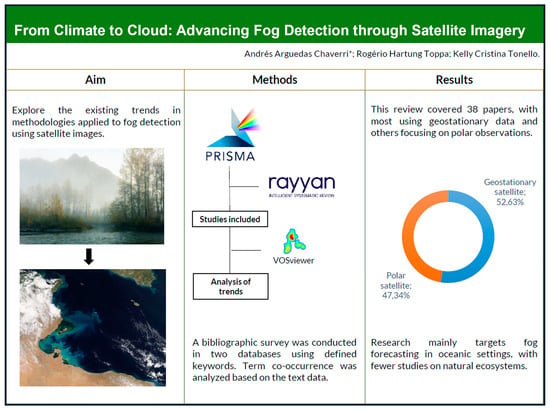
Graphical abstract
Open AccessArticle
Wildfire Risk Assessment Using the Fire Weather Index (FWI) in Greece
by
Effie Kostopoulou and George Stavridis
Climate 2025, 13(6), 109; https://doi.org/10.3390/cli13060109 - 26 May 2025
Abstract
This study assesses future wildfire risk in Greece using the Fire Weather Index (FWI), based on data from the Copernicus Climate Change Service. Historical conditions (1971–2000) and future projections (2069–2098) under RCP4.5 and RCP8.5 scenarios were analyzed, with a primary focus on the
[...] Read more.
This study assesses future wildfire risk in Greece using the Fire Weather Index (FWI), based on data from the Copernicus Climate Change Service. Historical conditions (1971–2000) and future projections (2069–2098) under RCP4.5 and RCP8.5 scenarios were analyzed, with a primary focus on the core fire season (May–October) and consideration of April and November to evaluate potential seasonal extension. The results show a significant shift toward higher fire risk classes, with the “very high” category increasing from 24% historically to 31% under RCP4.5 and 37% under RCP8.5, and the “extreme” class rising from 4% to 11% and 16%, respectively. Southern Greece, especially Crete, and the Dodecanese, is projected to experience the most severe increases. These changes, driven by rising temperatures and intensified drought conditions, indicate an increased likelihood of extreme fire events, posing increased risks to ecosystems, infrastructure, and regional economies. The findings highlight the need for targeted adaptation and fire management strategies.
Full article
(This article belongs to the Special Issue Climate Change Impacts at Various Geographical Scales (2nd Edition))
►▼
Show Figures
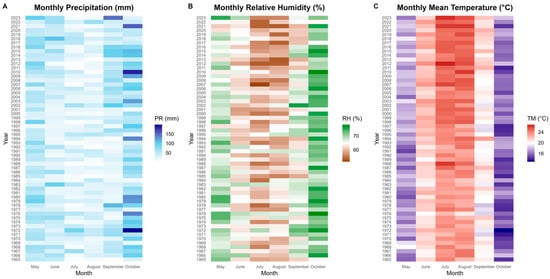
Figure 1
Open AccessArticle
Heat Waves in Portugal During the 2001–2024 Period: An Overview
by
A. Virgílio M. Oliveira, António M. Raimundo, Adélio R. Gaspar and Divo A. Quintela
Climate 2025, 13(6), 108; https://doi.org/10.3390/cli13060108 - 26 May 2025
Abstract
The present contribution addresses the Heat Waves (HWs) which occurred in Portugal’s mainland during the first 24 years of the XXI century: the number of HWs, their frequency, duration and geographic localization, among other impacts, are described. In a complementary perspective, due to
[...] Read more.
The present contribution addresses the Heat Waves (HWs) which occurred in Portugal’s mainland during the first 24 years of the XXI century: the number of HWs, their frequency, duration and geographic localization, among other impacts, are described. In a complementary perspective, due to the significant impacts of the 2003 HW, specifically in terms of mortality, a more detailed analysis of this event is performed. For the present analysis, HWs were identified using a modified version of the Heat Wave Duration Index (HWDI) proposed by the World Meteorological Organization (WMO). During the XXI century, between 2001 and 2024, 95 HWs occurred in the Portuguese mainland. In 2024, eight HWs occurred, followed by 2009, 2015 and 2017, with seven HWs each; in terms of monthly distribution, August (17) and May (16) displayed the highest values. HWs are now included in the World Health Organization agenda of natural hazards, enhancing the importance of these events. It is time to start considering HWs and their significant impacts as an important issue, especially in countries with older populations, like Portugal.
Full article
Open AccessArticle
Regime Change in Top of the Atmosphere Radiation Fluxes: Implications for Understanding Earth’s Energy Imbalance
by
Roger N. Jones and James H. Ricketts
Climate 2025, 13(6), 107; https://doi.org/10.3390/cli13060107 - 24 May 2025
Abstract
►▼
Show Figures
Earth’s energy imbalance (EEI) is a major indicator of climate change. Its metrics are top of the atmosphere radiation imbalance (EEI TOA) and net internal heat uptake. Both EEI and temperature are expected to respond gradually to forcing on annual timescales. This expectation
[...] Read more.
Earth’s energy imbalance (EEI) is a major indicator of climate change. Its metrics are top of the atmosphere radiation imbalance (EEI TOA) and net internal heat uptake. Both EEI and temperature are expected to respond gradually to forcing on annual timescales. This expectation was tested by analyzing regime changes in the inputs to EEI TOA along with increasing ocean heat content (OHC). Outward longwave radiation (OLR) displayed rapid shifts in three observational and two reanalysis records. The reanalysis records also contained shifts in surface fluxes and temperature. OLR, outward shortwave radiation (OSR) and TOA net radiation (Net) from the CERES Energy Balanced and Filled Ed-4.2.1 (2001–2023) record and from 27 CMIP5 historical and RCP4.5 forced simulations 1861–2100, were also analyzed. All variables from CERES contained shifts but the record was too short to confirm regime changes. Contributions of OLR and OSR to net showed high complementarity over space and time. EEI TOA was −0.47 ± 0.11 W m−2 in 2001–2011 and −1.09 ± 0.11 W m−2 in 2012–2023. Reduced OSR due to cloud feedback was a major contributor, coinciding with rapid increases in sea surface temperatures in 2014. Despite widely varying OLR and OSR, 26/27 climate models produced stable regimes for net radiation. EEI TOA was neutral from 1861, shifting downward in the 26 reliable records between 1963 and 1995, with 25 records showing it stabilizing by 2039. To investigate heat uptake, temperature and OHC 1955/57–2023 was analyzed for regime change in the 100 m, 700 m and 2000 m layers. The 100 m layer, about one third of total heat content, was dominated by regimes. Increases became more gradual with depth. Annual changes between the 700 m layer and 1300 m beneath were negatively correlated (−0.67), with delayed oscillations during lag years 2–9. Heat uptake at depth is dynamic. These changes reveal a complex thermodynamic response to gradual forcing. We outline a complex arrangement of naturally evolved heat engines, dominated by a dissipative heat engine nested within a radiative engine. EEI is a property of the dissipative heat engine. This far-from-equilibrium natural engine has evolved to take the path of least resistance while being constrained by its maximum power limit (~2 W m−2). It is open to the radiative engine, receiving solar radiation and emitting scattered shortwave and longwave radiation. Steady states maximize entropy within the dissipative engine by regulating spatial patterns in surface variables that influence outgoing OLR and OSR. Regime shifts to warmer climates balance the cost of greater irreversibility with increased energy rate density. The result is the regulation of EEI TOA through a form of thermodynamic metabolism.
Full article
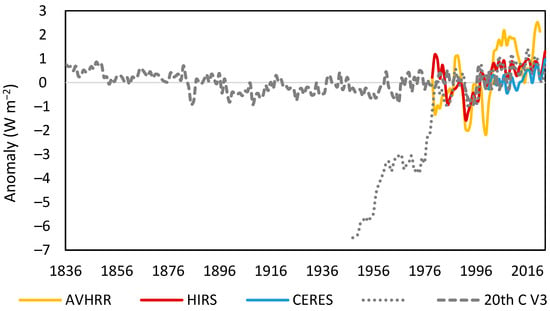
Figure 1
Open AccessArticle
Decadal Modulation of Summertime Northwestern Pacific Subtropical High Linked to Indian Ocean Basin Warming
by
Takashi Mochizuki and Yuta Ando
Climate 2025, 13(6), 106; https://doi.org/10.3390/cli13060106 - 24 May 2025
Abstract
The Northwestern Pacific Subtropical High (NPSH), usually enhanced by the basin-scale warming of the Indian Ocean (IOBW), plays a major role in controlling the summertime East Asian climate. To assess factors contributing to the decadal modulation of the NPSH and IOBW relationship in
[...] Read more.
The Northwestern Pacific Subtropical High (NPSH), usually enhanced by the basin-scale warming of the Indian Ocean (IOBW), plays a major role in controlling the summertime East Asian climate. To assess factors contributing to the decadal modulation of the NPSH and IOBW relationship in recent years, we conducted sensitivity experiments using an atmospheric general circulation model. We particularly focused on decadal-scale differences between the periods of 1982–2001 and 2002–2021, with the contribution of the climatological sea surface temperature (SST) as the background, in combination with the tropical Pacific SST anomaly in relation to the rapid or slow decay of the El Niño Southern Oscillation (ENSO). The results indicate that the IOBW-related SST anomalies in the Indian and tropical Pacific Oceans—which, overall, represent the well-known characteristics of the so-called Indo-western Pacific Ocean Capacitor effects—cooperatively enhanced the NPSH in the earlier period (1982–2001). On the other hand, the suppressed and westward-shifted SST anomalies in the tropical Pacific Ocean and the resultant changes in the diabatic heating of cumulus convection suppressed the NPSH enhancement in recent years (2002–2021). These results indicate that the modulation in the NPSH responses linked to the IOBW is primarily due to the so-called ENSO diversity rather than climatology.
Full article
(This article belongs to the Section Climate Dynamics and Modelling)
►▼
Show Figures
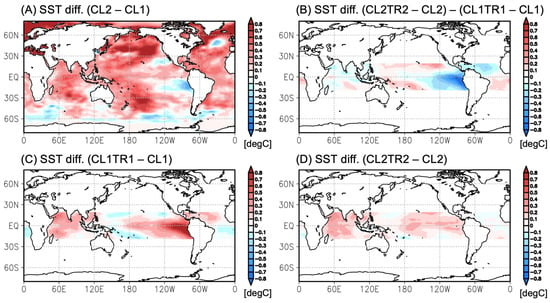
Figure 1
Open AccessArticle
Historical and Future Windstorms in the Northeastern United States
by
Sara C. Pryor, Jacob J. Coburn, Fred W. Letson, Xin Zhou, Melissa S. Bukovsky and Rebecca J. Barthelmie
Climate 2025, 13(5), 105; https://doi.org/10.3390/cli13050105 - 20 May 2025
Abstract
►▼
Show Figures
Large-scale windstorms represent an important atmospheric hazard in the Northeastern US (NE) and are associated with substantial socioeconomic losses. Regional simulations performed with the Weather Research and Forecasting (WRF) model using lateral boundary conditions from three Earth System Models (ESMs: Geophysical Fluid Dynamics
[...] Read more.
Large-scale windstorms represent an important atmospheric hazard in the Northeastern US (NE) and are associated with substantial socioeconomic losses. Regional simulations performed with the Weather Research and Forecasting (WRF) model using lateral boundary conditions from three Earth System Models (ESMs: Geophysical Fluid Dynamics Laboratory (GFDL), Hadley Centre Global Environment Model (HadGEM) and Max Planck Institute (MPI)) are used to quantify possible future changes in windstorm characteristics and/or changes in the parent cyclone types responsible for windstorms. WRF nested within MPI ESM best represents important aspects of historical windstorms and the cyclone types responsible for generating windstorms compared with a reference simulation performed with the ERA-Interim reanalysis for the historical climate. The spatial scale and frequency of the largest windstorms in each simulation defined using the greatest extent of exceedance of local 99.9th percentile wind speeds (U > U999) plus 50-year return period wind speeds (U50,RP) do not exhibit secular trends. Projections of extreme wind speeds and windstorm intensity/frequency/geolocation and dominant parent cyclone type associated with windstorms vary markedly across the simulations. Only the MPI nested simulations indicate statistically significant differences in windstorm spatial scale, frequency and intensity over the NE in the future and historical periods. This model chain, which also exhibits the highest fidelity in the historical climate, yields evidence of future increases in 99.9th percentile 10 m height wind speeds, the frequency of simultaneous U > U999 over a substantial fraction (5–25%) of the NE and the frequency of maximum wind speeds above 22.5 ms−1. These geophysical changes, coupled with a projected doubling of population, leads to a projected tripling of a socioeconomic loss index, and hence risk to human systems, from future windstorms.
Full article

Graphical abstract
Open AccessArticle
The Relationship of Climate Change and Malaria Incidence in the Gambella Region, Ethiopia
by
Geteneh Moges Assefa, Muluken Desalegn Muluneh and Zewdie Aderaw Alemu
Climate 2025, 13(5), 104; https://doi.org/10.3390/cli13050104 - 17 May 2025
Abstract
►▼
Show Figures
Background: This study investigates the relationship between climate variables and malaria incidence in Ethiopia’s Gambella region, a hotspot for malaria transmission. Methods: Utilizing 30 years of satellite-derived climate data and 10 years of malaria incidence records from the Ethiopian Public Health Institute, this
[...] Read more.
Background: This study investigates the relationship between climate variables and malaria incidence in Ethiopia’s Gambella region, a hotspot for malaria transmission. Methods: Utilizing 30 years of satellite-derived climate data and 10 years of malaria incidence records from the Ethiopian Public Health Institute, this research analyzed trends and correlations. Climate variables, including rainfall, temperature, and relative humidity, were extracted using GPS data and global climate models from NASA. Autoregressive modeling was employed to assess the impact of these variables on malaria incidence at different time lags (lag 0, 1, and 2). Results: The analysis revealed significant upward trends in rainfall, relative humidity, and temperature over the 30-year period, coinciding with a rise in malaria cases over the past decade. Rainfall exhibited delayed effects on malaria incidence, while relative humidity demonstrated both immediate and persistent impacts. Relative humidity at lag 0 had the strongest influence (IRR = 1.002, 95% CI: 1.001–1.003), whereas temperature showed minimal effects (IRR = 1.000, 95% CI: 1.000–1.001). Conclusions: These findings underscore the critical role of climate variables in driving malaria transmission and highlight the urgent need for climate adaptation strategies, early warning systems, and strengthened health infrastructure. Leveraging climate data for predictive modeling and expanding targeted interventions, such as insecticide-treated nets (ITNs), is essential to mitigate climate-driven malaria risks and protect vulnerable communities in Gambella and similar regions
Full article
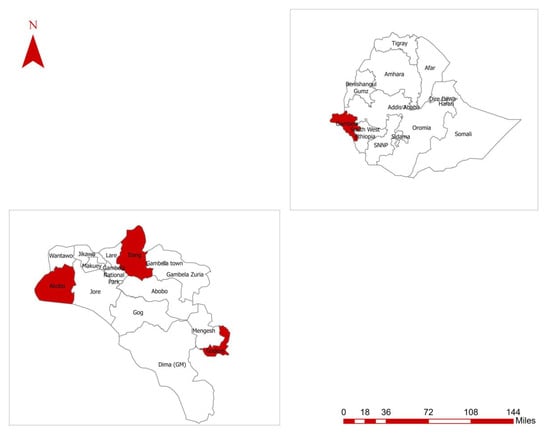
Figure 1
Open AccessArticle
Recent Increasing Trend in Fire Activity over Southern India Inferred from Two Decades of MODIS Satellite Measurements
by
S. Vijaya Kumar, S. Ravindra Babu, M. Roja Raman, K. Sunilkumar, N. Narasimha Rao and M. Ravisankar
Climate 2025, 13(5), 103; https://doi.org/10.3390/cli13050103 - 16 May 2025
Abstract
With rising global temperatures attributed to climate change, an increase in fire occurrences worldwide is anticipated. Therefore, a detailed examination of changing fire patterns is essential to improve our understanding of effective control strategies. This study analyzes the long-term trends of fire activity
[...] Read more.
With rising global temperatures attributed to climate change, an increase in fire occurrences worldwide is anticipated. Therefore, a detailed examination of changing fire patterns is essential to improve our understanding of effective control strategies. This study analyzes the long-term trends of fire activity in Southern India (8–20° N, 73–85° E), utilizing MODIS active fire count data from January 2003 to December 2023. The climatological monthly mean results show that Southern India experiences heightened fire activity from December to May, reaching a peak in March. Yearly variations indicate that the highest fire counts occurred in 2021, followed by 2023, 2012, and 2018. The three most significant fire years in recent history reflect an upward trend in fire activity over the past decade, confirming insights from annual trend analysis. The correlation between inter-annual fire anomalies and different meteorological factors reveals a notable negative relationship with precipitation and soil moisture and a positive relationship with surface air temperature (SAT). Soil moisture demonstrates a stronger correlation (−0.45) than precipitation and SAT. In summary, long-term trends show a noteworthy annual increase of 3%. Additionally, monthly trends reveal interesting rising patterns in October, November, December, and January with higher significance levels. Our research supports regional climate action initiatives and policies addressing fire incidents in Southern India in light of the ongoing warming crisis.
Full article
(This article belongs to the Section Climate and Environment)
►▼
Show Figures
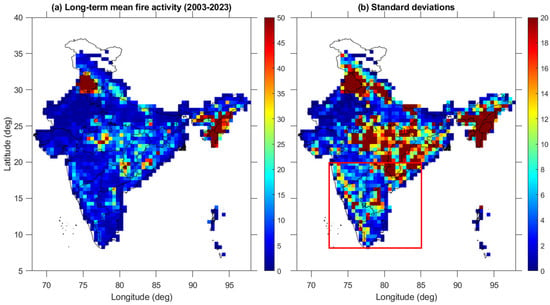
Figure 1
Open AccessSystematic Review
Green Banking Practices, Opportunities, and Challenges for Banks: A Systematic Review
by
Martin Kamau Muchiri, Szilvia Kesmarki Erdei-Gally and Maria Fekete-Farkas
Climate 2025, 13(5), 102; https://doi.org/10.3390/cli13050102 - 14 May 2025
Abstract
►▼
Show Figures
Green banking has become a concept of interest, particularly with the focus on the role played by banks in pursuing Sustainable Development Goal 13 on climate action. This study is distinguished from previous ones in that it aimed at investigating the multi-regional view
[...] Read more.
Green banking has become a concept of interest, particularly with the focus on the role played by banks in pursuing Sustainable Development Goal 13 on climate action. This study is distinguished from previous ones in that it aimed at investigating the multi-regional view on green banking practices/activities around the world with a special emphasis on the opportunities and challenges that various banks encounter in different geographical areas. A systematic review approach was adopted based on the Web of Science and Scopus databases, in which 159 articles were retrieved and 62 articles synthesized through a thematic analysis. The research process was demonstrated through a Prisma 2020 flowchart. Key multiregional green banking activities identified include digital banking, green loan or sukuk products for Islam-dominated economies, green services and investments, and financing of green infrastructure. In essence, the implementation of green banking is either directly through active green lending and greening their operations or indirectly through enhancing conditions. The key challenges identified include regulatory handles, social economic and culture hinderances, transition risk and the high cost of compliance, greenwashing concerns, and weak investor confidence. The most prevalent opportunities included green banking as a strategic competitive advantage, emerging market niche, and as a strategy for long-term climate risk management.
Full article
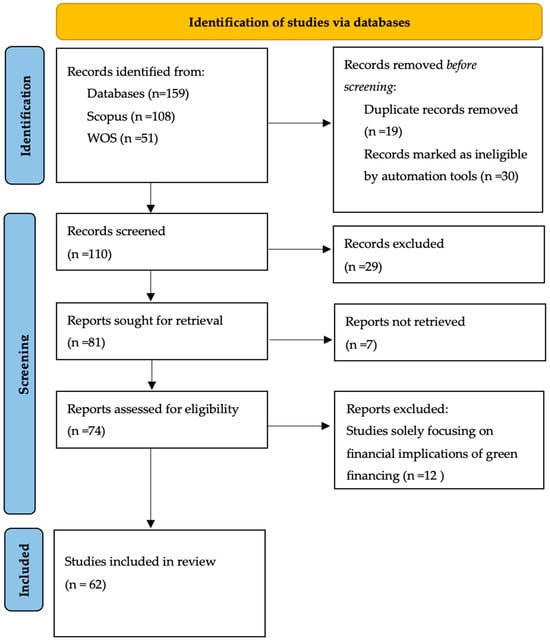
Figure 1
Open AccessArticle
Influences of Climate Factors and Tree Characteristics on Carbon Storage in Longan Orchards, Thailand
by
Yaowatat Boongla, Wanlapa Outong, Thaneeya Chetiyanukornkul and Supachai Changphuek
Climate 2025, 13(5), 101; https://doi.org/10.3390/cli13050101 - 13 May 2025
Abstract
►▼
Show Figures
This research aimed to investigate the above-ground biomass and carbon storage in the above-ground biomass of longan trees located in Lumphun and Surin Provinces. The species, tree height, and diameter at ground level were measured at the study site. The diameter-based above-ground biomass
[...] Read more.
This research aimed to investigate the above-ground biomass and carbon storage in the above-ground biomass of longan trees located in Lumphun and Surin Provinces. The species, tree height, and diameter at ground level were measured at the study site. The diameter-based above-ground biomass (AGB) was calculated using the allometric equation for the longan tree plantation, along with carbon storage. It was then multiplied by 0.5 to estimate the carbon storage (CS) in the AGB. In Lamphun Province, longan trees of the Edo species totaled 319 per 2.5 ha, with an average biomass of 180.06 kg, resulting in an estimated carbon storage of 1.04 Mg C/ha. In Surin Province, longan trees of the Paungtong species totaled 227 per 1.6 ha, with an average biomass of 149.63 kg and an estimated carbon storage of 0.86 Mg C/ha. Our findings show that tree characteristics such as longan tree diameter, height, and age are associated with biomass and carbon storage, and that climate variation may affect the health of longan trees and plantation productivity. Thus, this study serves as a useful guide for understanding the carbon storage of longan trees and improving longan management.
Full article
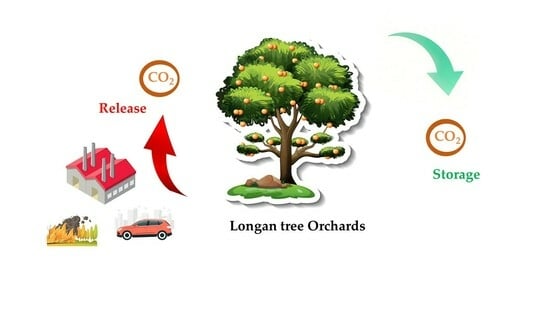
Graphical abstract
Open AccessArticle
Projected Impacts of Climate and Land Use Change on Endemic Plant Distributions in a Mediterranean Island Hotspot: The Case of Evvia (Aegean, Greece)
by
Konstantinos Kougioumoutzis, Ioannis P. Kokkoris, Panayiotis Trigas, Arne Strid and Panayotis Dimopoulos
Climate 2025, 13(5), 100; https://doi.org/10.3390/cli13050100 - 13 May 2025
Abstract
Anthropogenic climate and land use change pose major threats to island floras worldwide, yet few studies have integrated these drivers in a single vulnerability assessment. Here, we examine the endemic flora of Evvia, the second-largest Aegean island in Greece and an important biodiversity
[...] Read more.
Anthropogenic climate and land use change pose major threats to island floras worldwide, yet few studies have integrated these drivers in a single vulnerability assessment. Here, we examine the endemic flora of Evvia, the second-largest Aegean island in Greece and an important biodiversity hotspot, as a model system to address how these disturbances may reshape species distributions, community composition, and phylogenetic diversity patterns. We used species distribution models under the Ensemble of Small Models and the ENphylo framework, specifically designed to overcome parameter uncertainty in rare species with inherently limited occurrence records. By integrating climate projections and dynamic land use data, we forecasted potential range shifts, habitat fragmentation, and biodiversity patterns for 114 endemic taxa through the year 2100. We addressed transferability uncertainty, a key challenge in projecting distributions under novel conditions, using the Shape framework extrapolation analysis, thus ensuring robust model projections. Our findings reveal pronounced projected range contractions and increased habitat fragmentation for all studied taxa, with more severe impacts on single-island endemics. Our models demonstrated high concordance with established IUCN Red List assessments, validating their ecological relevance despite the sample size limitations of single-island endemics. Current biodiversity hotspots, primarily located in mountainous regions, are expected to shift towards lowland areas, probably becoming extinction hotspots due to projected species losses, especially for Evvia’s single-island endemics. Emerging hotspot analysis identified new biodiversity centres in lowland zones, while high-altitude areas showed sporadic hotspot patterns. Temporal beta diversity analysis indicated higher species turnover of distantly related taxa at higher elevations, with closely related species clustering at lower altitudes. This pattern suggests a homogenisation of plant communities in lowland areas. The assessment of protected area effectiveness revealed that while 94.6% of current biodiversity hotspots are within protected zones, this coverage is projected to decline by 2100. Our analysis identified conservation gaps, highlighting areas requiring urgent protection to preserve future biodiversity. Our study reveals valuable information regarding the vulnerability of island endemic floras to global change, offering a framework applicable to other insular systems. Our findings demonstrate that adaptive conservation strategies should account for projected biodiversity shifts and serve as a warning for other insular biodiversity hotspots, urging immediate actions to maintain the unique evolutionary heritage of islands.
Full article
(This article belongs to the Section Climate and Environment)
►▼
Show Figures
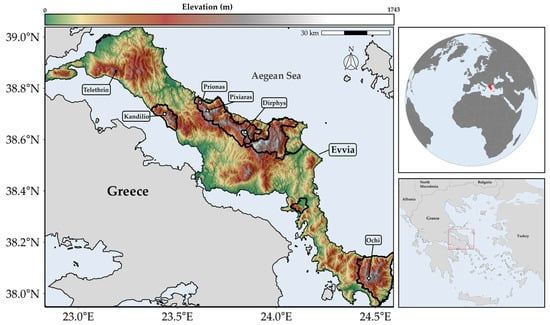
Figure 1
Open AccessArticle
Sustainability Assessment and Resource Utilization of Agro-Processing Waste in Biogas Energy Production
by
Viktor Koval, Dzintra Atstāja, Liliya Filipishyna, Viktoriia Udovychenko, Halyna Kryshtal and Yaroslav Gontaruk
Climate 2025, 13(5), 99; https://doi.org/10.3390/cli13050099 - 11 May 2025
Abstract
►▼
Show Figures
Biogas production from agricultural waste reduces methane emissions and addresses climate change challenges by converting livestock and organic waste into energy. This study analyzed biogas production in agricultural enterprises under the European Green Deal, the advantages of biogas as an energy source, and
[...] Read more.
Biogas production from agricultural waste reduces methane emissions and addresses climate change challenges by converting livestock and organic waste into energy. This study analyzed biogas production in agricultural enterprises under the European Green Deal, the advantages of biogas as an energy source, and the use of digestate in agriculture. The raw material for biogas production from agro-industrial wastes in Ukraine has been investigated, showing that the country’s biogas production potential amounts to 34.59 billion m3, including 0.65 billion m3 from processing plant wastes. The main types of biomass that can be used for biogas production in Ukraine are crop residues (71.4%), manure (26.6%), and food industry waste (2.0%). The implementation of biogas production projects will reduce greenhouse gas emissions by 3.98 billion tons of CO2 and increase profits through electricity sales. This study examines the barriers and prospects for the development of electricity generation from biogas in Ukraine in the context of the integration of Ukraine’s energy system into the EU energy space. Directions for developing the biogas industry, focusing on electricity production within the framework of European decarbonization initiatives, will enhance the energy security of Ukraine and the EU. Estimating the energy production from agricultural waste allows for determining biogas output from organic waste. A regional biogas cluster model was developed based on the agro-industrial complex, which combines the production of biogas, electricity, water, and biofertilizers with increased efficiency and regional sustainable development.
Full article

Figure 1
Open AccessArticle
How Do Climate Concerns and Value Orientation Among Bankers Influence Agricultural Financing and Development?
by
Khatun Mst Asma, Md Rony Masud and Koji Kotani
Climate 2025, 13(5), 98; https://doi.org/10.3390/cli13050098 - 9 May 2025
Abstract
Agricultural financing is crucial for economic development and sustainability. However, little is known about how bankers’ concerns about climate change influence their decision-making for agricultural financing and development and how these concerns are related to possible future performance. This study investigates a research
[...] Read more.
Agricultural financing is crucial for economic development and sustainability. However, little is known about how bankers’ concerns about climate change influence their decision-making for agricultural financing and development and how these concerns are related to possible future performance. This study investigates a research question “how do bankers’ climate concerns and value orientation influence agricultural financing and development?” and the hypotheses “bankers’ climate concerns are negatively related to agricultural financing and development, whereas their value orientation for future generations is positively associated with these endeavors”. We conduct questionnaire surveys and collect data on climate concerns, prosocial attitude for future generations and sociodemographic & bank related information from 596 bankers at three areas in Bangladesh. The results reveal three main findings. First, bankers who have high levels of climate concerns tend to be less optimistic about agricultural financing and development. Second, bankers who live in high climate-change areas tend to have more severe climate concerns and darker prospectives in agricultural financing and development than those in low climate-change areas. Third, bankers who have a high value orientation for future generations are likely to be positive about future agricultural financing and development. Overall, our findings suggest that future agricultural financing and development shall be discouraged as climate change becomes severe, hitting low-land areas, such as Bangladesh, through the lens of bankers’ perceptions, unless the bankers possess high concerns for future generations. To counter such negative possibilities, a new agricultural financing scheme, such as “agricultural green banking”, shall be necessary to implement.
Full article
(This article belongs to the Section Climate and Economics)
►▼
Show Figures
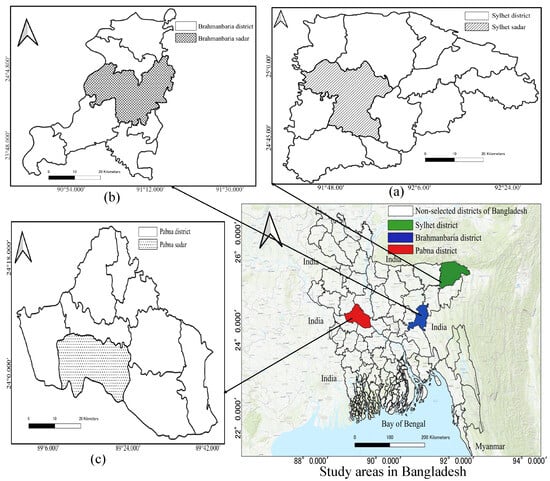
Figure 1
Open AccessArticle
El Niño Magnitude and Western Pacific Warm Pool Displacement. Part II: Future Changes Under Global Warming
by
Zhuoxin Gu and De-Zheng Sun
Climate 2025, 13(5), 97; https://doi.org/10.3390/cli13050097 - 9 May 2025
Abstract
Observations reveal a strong correlation between the magnitude of El Niño and the displacement of the eastern edge of the western Pacific warm pool (WPWP). In Part I, this relationship was examined in the Coupled Model Intercomparison Project Phase 6 (CMIP6) models using
[...] Read more.
Observations reveal a strong correlation between the magnitude of El Niño and the displacement of the eastern edge of the western Pacific warm pool (WPWP). In Part I, this relationship was examined in the Coupled Model Intercomparison Project Phase 6 (CMIP6) models using their historical simulations, and it was found to be comparable to that in the observations. The present study extends the analysis to future projections under two Shared Socioeconomic Pathway (SSP) scenarios—SSP245 and SSP585—to assess whether this strong relationship persists under global warming. It is found that El Niño magnitude and WPWP boundary displacement in most models under global warming are as strongly correlated as in the observations and their historical simulations. Moreover, most models project that stronger El Niño events will be accompanied by a greater eastward displacement of the WPWP boundary. For models with a positive response, the ensemble projects an increase in El Niño magnitude of 0.21 ± 0.03 °C (0.20 ± 0.03 °C) under the SSP245 (SSP585) scenario, accompanied by an eastward displacement of the WPWP by 11.7 ± 1.3° (11.1 ± 1.0°) in longitude. These results further support the notion that El Niño is a consequence of the eastward extension of the WPWP.
Full article
(This article belongs to the Special Issue The Dynamics and Impacts of Ocean-Atmosphere Coupling on Regional and Global Climate)
►▼
Show Figures
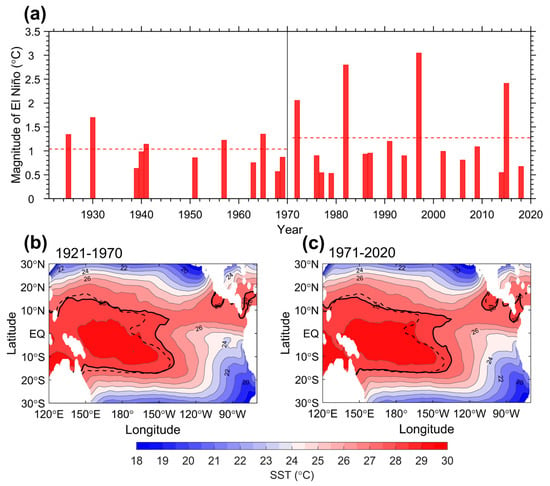
Figure 1
Open AccessArticle
Developing Low-Carbon Pathways for the Transport Sector in Ethiopia
by
Obiora A. Nnene, Dereje Senshaw, Mark Zuidgeest, Owen Mwaura and Yizengaw Yitayih
Climate 2025, 13(5), 96; https://doi.org/10.3390/cli13050096 - 6 May 2025
Abstract
This paper discusses the development of baseline and mitigation scenarios to guide the creation of a long-term plan supporting low-carbon transport in Ethiopia. Developing this method involved comprehensively reviewing policy documents, collecting historical activity data, and modelling the baseline and mitigation scenarios. The
[...] Read more.
This paper discusses the development of baseline and mitigation scenarios to guide the creation of a long-term plan supporting low-carbon transport in Ethiopia. Developing this method involved comprehensively reviewing policy documents, collecting historical activity data, and modelling the baseline and mitigation scenarios. The paper emphasises the importance of stakeholder engagement, which is instrumental in validating the model inputs, policy targets, and results at each stage, ensuring the credibility and robustness of our findings. The scenario development and analysis are based on the IPCC guidelines, informed by the policies of the Government of Ethiopia, and implemented with the Low-Energy Analysis Platform (LEAP). Three net-zero scenarios are assessed for the time horizon between 2020 to 2050. The so-called maximum ambition, NDC-aligned, and late action scenarios reflect the energy requirements and emissions contribution for varying levels of government ambition towards low-carbon interventions in the transport sector. In the baseline scenario, the total amount of carbon emissions is estimated at 4.81 million tonnes of CO2e in 2020, which is projected to increase to over 15 million tonnes by 2050. Under the mitigation scenarios, significant reductions are projected, with specific interventions like electrification in road freight reducing emissions by 9.68 MtCO2e and expanding rail transport reducing 9.95 MtCO2e by 2050 compared to the baseline. Other strategies identified for mitigating transport sector emissions, like improving energy efficiency, encouraging mass transit and non-motorised transport, show good potential for achieving a greener future. With the transport sector in Ethiopia identified as a major contributor to GHG emissions and climate change, this paper underscores the government’s efforts to ensure the long-term sustainability of its transport sector.
Full article
(This article belongs to the Special Issue Climate Change and Transport)
►▼
Show Figures

Figure 1
Open AccessArticle
Improving Daily CMIP6 Precipitation in Southern Africa Through Bias Correction—Part 1: Spatiotemporal Characteristics
by
Amarech Alebie Addisuu, Gizaw Mengistu Tsidu and Lenyeletse Vincent Basupi
Climate 2025, 13(5), 95; https://doi.org/10.3390/cli13050095 - 4 May 2025
Cited by 1
Abstract
►▼
Show Figures
Impact models used in water, ecology, and agriculture require accurate climatic data to simulate observed impacts. Some of these models emphasize the distribution of precipitation within a month or season rather than the overall amount. To meet this requirement, a study applied three
[...] Read more.
Impact models used in water, ecology, and agriculture require accurate climatic data to simulate observed impacts. Some of these models emphasize the distribution of precipitation within a month or season rather than the overall amount. To meet this requirement, a study applied three bias correction techniques—scaled distribution mapping (SDM), quantile distribution mapping (QDM), and QDM with a separate treatment for precipitation below and above the 95th percentile threshold (QDM95)—to daily precipitation data from eleven Coupled Model Intercomparison Project Phase 6 (CMIP6) models, using the Climate Hazards Group Infrared Precipitation with Station version 2 (CHIRPS) as a reference. This study evaluated the performance of all bias-corrected CMIP6 models over Southern Africa from 1982 to 2014 in replicating the spatial and temporal patterns of precipitation across the region against three observational datasets, CHIRPS, the Climatic Research Unit (CRU), and the Global Precipitation Climatology Centre (GPCC), using standard statistical metrics. The results indicate that all bias-corrected precipitation generally performs better than native model precipitation in replicating the observed December–February (DJF) mean and seasonal cycle. The probability density function (PDF) of the bias-corrected regional precipitation indicates that bias correction enhances model performance, particularly for precipitation in the range of 3–35 mm/day. However, both corrected and uncorrected models underestimate higher extremes. The pattern correlations of the bias-corrected precipitation with CHIRPS, the GPCC, and the CRU, as compared to the correlations of native precipitation with the three datasets, have improved from 0.76–0.89 to 0.97–0.99, 0.73–0.87 to 0.94–0.97, and 0.74–0.89 to 0.97–0.99, respectively. Additionally, the Taylor skill scores of the models for replicating the CHIRPS, GPCC, and CRU precipitation spatial patterns over Southern Africa have improved from 0.57–0.80 to 0.79–0.95, 0.55–0.76 to 0.80–0.91, and 0.54–0.75 to 0.81–0.91, respectively. Overall, among the three bias correction techniques, QDM consistently demonstrated better performance than both QDM95 and SDM across various metrics. The implementation of distribution-based bias correction resulted in a significant reduction in bias and improved the spatial consistency between models and observations over the region.
Full article

Figure 1
Open AccessArticle
Extreme Weather Shocks and Crime: Empirical Evidence from China and Policy Recommendations
by
Huaxing Lin and Ping Jiang
Climate 2025, 13(5), 94; https://doi.org/10.3390/cli13050094 - 3 May 2025
Abstract
►▼
Show Figures
Rising global temperatures and increasing extreme weather events pose challenges to social stability and public security. This study examines the relationship between extreme weather and crime in China using fixed-effects quasi-Poisson and negative binomial regression models, along with a generalized additive model to
[...] Read more.
Rising global temperatures and increasing extreme weather events pose challenges to social stability and public security. This study examines the relationship between extreme weather and crime in China using fixed-effects quasi-Poisson and negative binomial regression models, along with a generalized additive model to explore nonlinear effects. The results show that extreme heat significantly increases crime, following an “S” shaped pattern. This intense heat heightens emotional instability and impulsivity, leading to a crime surge. While moderate heat reduces crime, extreme cold and heavy rainfall have no significant effects. These findings highlight the need for stratified policy interventions. Based on empirical evidence, this study proposes three key recommendations: (1) developing a weather warning and public security risk coordination system, (2) promoting community-based crime prevention through mutual assistance networks and infrastructure improvements, and (3) enhancing psychological interventions to mitigate mental health challenges linked to extreme weather. Integrating meteorological data, law enforcement, and interventions to help potential perpetrators can strengthen urban resilience and public safety against climate-induced crime risks.
Full article
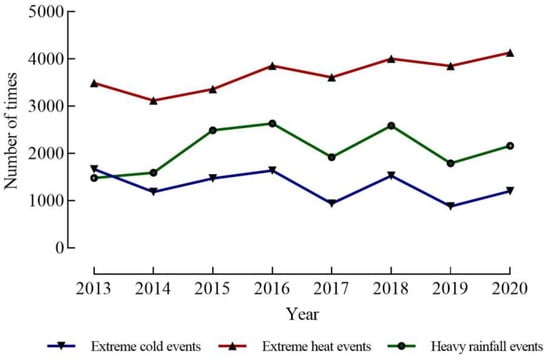
Figure 1
Open AccessArticle
Improving Daily CMIP6 Precipitation in Southern Africa Through Bias Correction— Part 2: Representation of Extreme Precipitation
by
Amarech Alebie Addisuu, Gizaw Mengistu Tsidu and Lenyeletse Vincent Basupi
Climate 2025, 13(5), 93; https://doi.org/10.3390/cli13050093 - 2 May 2025
Abstract
►▼
Show Figures
Accurate simulation of extreme precipitation events is crucial for managing climate-vulnerable sectors in Southern Africa, as such events directly impact agriculture, water resources, and disaster preparedness. However, global climate models frequently struggle to capture these phenomena, which limits their practical applicability. This study
[...] Read more.
Accurate simulation of extreme precipitation events is crucial for managing climate-vulnerable sectors in Southern Africa, as such events directly impact agriculture, water resources, and disaster preparedness. However, global climate models frequently struggle to capture these phenomena, which limits their practical applicability. This study investigates the effectiveness of three bias correction techniques—scaled distribution mapping (SDM), quantile distribution mapping (QDM), and QDM with a focus on precipitation above and below the 95th percentile (QDM95)—and the daily precipitation outputs from 11 Coupled Model Intercomparison Project Phase 6 (CMIP6) models. The Climate Hazards Group Infrared Precipitation with Stations (CHIRPS) dataset was served as a reference. The bias-corrected and native models were evaluated against three observational datasets—the CHIRPS, Multi-Source Weighted Ensemble Precipitation (MSWEP), and Global Precipitation Climatology Center (GPCC) datasets—for the period of 1982–2014, focusing on the December-January-February season. The ability of the models to generate eight extreme precipitation indices developed by the Expert Team on Climate Change Detection and Indices (ETCCDI) was evaluated. The results show that the native and bias-corrected models captured similar spatial patterns of extreme precipitation, but there were significant changes in the amount of extreme precipitation episodes. While bias correction generally improved the spatial representation of extreme precipitation, its effectiveness varied depending on the reference dataset used, particularly for the maximum one-day precipitation (Rx1day), consecutive wet days (CWD), consecutive dry days (CDD), extremely wet days (R95p), and simple daily intensity index (SDII). In contrast, the total rain days (RR1), heavy precipitation days (R10mm), and extremely heavy precipitation days (R20mm) showed consistent improvement across all observations. All three bias correction techniques enhanced the accuracy of the models across all extreme indices, as demonstrated by higher pattern correlation coefficients, improved Taylor skill scores (TSSs), reduced root mean square errors, and fewer biases. The ranking of models using the comprehensive rating index (CRI) indicates that no single model consistently outperformed the others across all bias-corrected techniques relative to the CHIRPS, GPCC, and MSWEP datasets. Among the three bias correction methods, SDM and QDM95 outperformed QDM for a variety of criteria. Among the bias-corrected strategies, the best-performing models were EC-Earth3-Veg, EC-Earth3, MRI-ESM2, and the multi-model ensemble (MME). These findings demonstrate the efficiency of bias correction in improving the modeling of precipitation extremes in Southern Africa, ultimately boosting climate impact assessments.
Full article

Figure 1
Open AccessArticle
Exploring Socio-Spatial Inequalities in Flood Response Using Flood Simulation and Social Media Data: A Case Study of 2020 Flood in Nanjing, China
by
Yi Chen, Yang Zhang, Dekai Tao, Wenjie Zhang, Jingxian You, Yuan Li, Yong Lei and Yao Meng
Climate 2025, 13(5), 92; https://doi.org/10.3390/cli13050092 - 30 Apr 2025
Abstract
►▼
Show Figures
Identifying socio-spatial inequalities in flood resilience is crucial for effective disaster risk management. This study integrates flood susceptibility simulations and Weibo activity data to construct a flood susceptibility index and incorporates socio-spatial differentiation to represent residents’ coping capacities. By combining flood risk awareness
[...] Read more.
Identifying socio-spatial inequalities in flood resilience is crucial for effective disaster risk management. This study integrates flood susceptibility simulations and Weibo activity data to construct a flood susceptibility index and incorporates socio-spatial differentiation to represent residents’ coping capacities. By combining flood risk awareness and coping capacity, we develop a comprehensive flood response capability model to examine the spatial patterns of flood resilience inequality. The findings reveal that (1) high flood risk awareness is concentrated near the Yangtze River and major lakes based on social media data and simulations; (2) coping capacity to floods exhibits a central–periphery pattern, with higher resilience in urban centers and gradually decreases gradually to the suburban and exurban areas; (3) communities are classified into four types based on the combination of flood risk awareness and coping capacities. Multiple linear regression analysis indicates that both natural and social factors significantly influence flood response capacity. This research provides critical insights into the spatial patterns of flood resilience, offering valuable guidance for formulating targeted adaptation strategies.
Full article
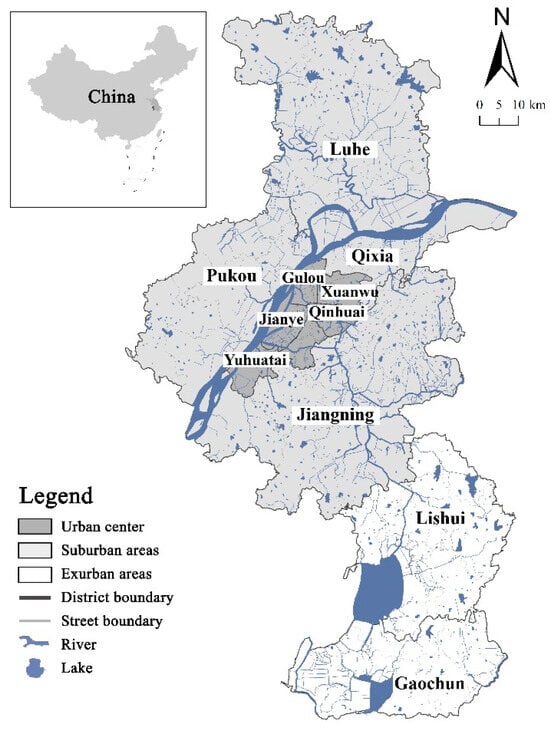
Figure 1

Journal Menu
► ▼ Journal Menu-
- Climate Home
- Aims & Scope
- Editorial Board
- Reviewer Board
- Topical Advisory Panel
- Instructions for Authors
- Special Issues
- Topics
- Sections & Collections
- Article Processing Charge
- Indexing & Archiving
- Editor’s Choice Articles
- Most Cited & Viewed
- Journal Statistics
- Journal History
- Journal Awards
- Society Collaborations
- Editorial Office
Journal Browser
► ▼ Journal BrowserHighly Accessed Articles
Latest Books
E-Mail Alert
News
Topics
Topic in
Agronomy, Climate, Earth, Remote Sensing, Water
Advances in Crop Simulation Modelling
Topic Editors: Mavromatis Theodoros, Thomas Alexandridis, Vassilis AschonitisDeadline: 15 July 2025
Topic in
Hydrology, Water, Climate, Atmosphere, Agriculture, Geosciences
Advances in Hydro-Geological Research in Arid and Semi-Arid Areas
Topic Editors: Ahmed Elbeltagi, Quanhua Hou, Bin HeDeadline: 31 July 2025
Topic in
Climate, Diversity, Forests, Plants, Sustainability, Earth
Responses of Trees and Forests to Climate Change
Topic Editors: Qinglai Dang, Ilona Mészáros, Lei WangDeadline: 30 August 2025
Topic in
Energies, Hydrology, Remote Sensing, Water, Climate, Earth, Sustainability
Climate Change and Human Impact on Freshwater Water Resources: Rivers and Lakes
Topic Editors: Leszek Sobkowiak, Arthur Mynett, David PostDeadline: 30 September 2025

Conferences
Special Issues
Special Issue in
Climate
Climate Change—Achieving the UN Sustainable Development Goals in Urban Contexts
Guest Editors: Christine Fürst, Muhammad Mushahid Anwar, Yazidhi Bamutaze, Ellen Banzhaf, Bolormaa Batsuuri, Henry Bulley, Paula Kapstein, Daniele La Rosa, Purevtseren Myagmartseren, Appollonia Okhimamhe, Malte SteinbrinkDeadline: 31 May 2025
Special Issue in
Climate
Impacts of Extreme Weather on Hydrological Process, Water Quality and Ecosystem in Agricultural and Forested Watersheds under the Changing Climate
Guest Editors: Ying Ouyang, Johnny M. Grace, Sudhanshu Sekhar PandaDeadline: 31 May 2025
Special Issue in
Climate
Climate Impact on Human Health
Guest Editors: Zhiming Yang, Yunquan Zhang, Zheming Yan, Ang LiDeadline: 31 May 2025
Special Issue in
Climate
Climate Change Impacts on Hydrologic Variables across Timescales and Spatial Scale
Guest Editors: Yang Zhou, Jiabao WangDeadline: 31 May 2025
Topical Collections
Topical Collection in
Climate
Adaptation and Mitigation Practices and Frameworks
Collection Editor: Rajib Shaw







